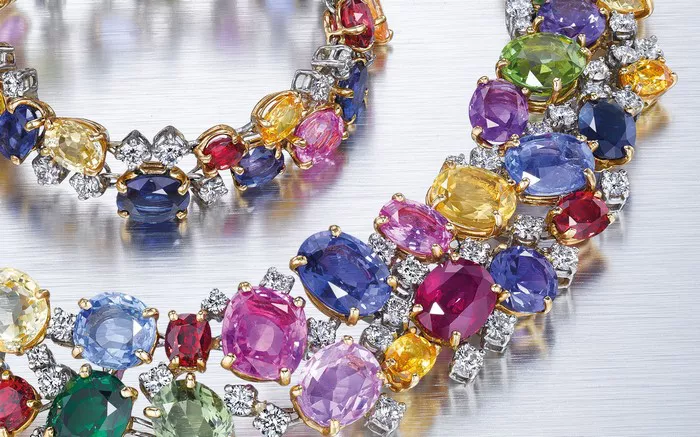In the intimate setting of a blue velvet-lined space, an Italian artisan delicately carves intricate lines into a seemingly ordinary slab of metal. Beside her, Luca Buccellati, a third-generation member of the renowned Italian jewelry house, recounts the craftsmanship involved in creating a gold bracelet from that very piece of metal. This meticulous process, rooted in age-old Renaissance-era methods, is emblematic of Buccellati’s signature style.
During an exhibition in Macau, complemented by live demonstrations of artisanal techniques, Buccellati unveiled its Mosaico collection of high jewelry. Inspired by Byzantine mosaics, the collection represents a creative challenge, seeking to infuse a fresh perspective into a theme previously explored by the house’s founder, Mario Buccellati.
Andrea Buccellati, the third-generation creative director, emphasizes the importance of retaining the house’s DNA while infusing a subtle modernity into the collection. This involves applying Buccellati’s goldsmithing techniques, including intricate hand-engraved finishes and fine honeycombed openwork, to evoke contemporary lightness in both appearance and weight.
The Mosaico collection, initially reported to comprise 36 to 50 pieces, is revealed by Andrea to actually consist of close to 70 pieces. Crafted over nine months to a year, these creations showcase Buccellati’s commitment to unparalleled craftsmanship. Luca mentions that several pieces are often spoken for before being displayed publicly, attesting to their exclusivity and desirability.
Among the standout pieces is a Mosaico necklace in white and yellow gold adorned with drop-shaped yellow diamonds, white diamonds, and seven rare bezel-set and cushion-cut Kashmir sapphires. The necklace, taking a year and a half to make, exemplifies Buccellati’s dedication to using exceptional gemstones and intricate hand-engraved details, even in the setting.
Buccellati’s unique metalworking techniques, including Rigato, Segrinato, Telato, Ornato, and Modellato, contribute to the individuality of each piece. These methods, passed down through generations, result in variations even within identical styles. Luca emphasizes that each piece is essentially one of a kind, reflecting the brand’s heritage of offering unique creations since its establishment in 1918.
While Buccellati’s earliest days involved showcasing sketches and drawings for made-to-order pieces, the brand’s recent foray into designing collections marks a departure from its traditional approach. The Mosaico collection, along with the previous Giardino collection, demonstrates Buccellati’s ability to marry age-old craftsmanship with innovative design, proving that the brand continues to evolve while remaining rooted in its rich heritage.


